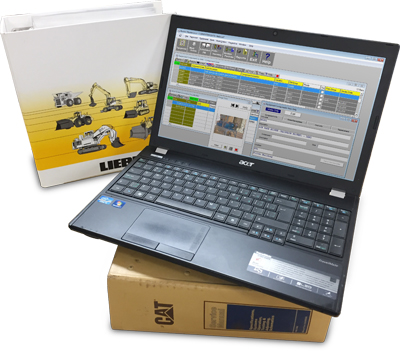
Organizing your system documentation, including manuals, schematics, bills of material, etc. helps in proper hydraulic system maintenance.
If you’re looking to improve your hydraulic system maintenance program, you must begin by organizing your documentation. The experts at CD Industrial Group (CDIG) explained in a recent webinar that they feel there is a documentation crisis at play in so many of the sites they visit around North America. “It’s very hard, we believe, to get your maintenance program organized if the documentation for a hydraulic system isn’t accurate, up to date, gathered in one place for easy reference,” said Carl Dyke, founder of CDIG.
Mark Pszczolkowski, consultant trainer with CDIG, added that it is impossible to work on something if you don’t know what you have. He stressed the importance of keeping original documents and schematics and updating them as the system is accurately updated over the years. “Those books that get put on the shelves or shoved to the back side of something, they are the key to the whole system when it was designed, but they very likely are not accurate to what you have today.”
Using this documentation allows system operators and maintenance personnel to know what normal is. Truly knowing your system and how it should operate is key to efficient operation. And this all begins with documentation.
First, keeping your schematics up to date is the most important tool in maintenance and troubleshooting. Not having updated schematics means time will be wasted. Review the schematic on a regular basis—say once a year at least—as changes will be fresh in the memory and can be duly noted. If you leave a schematic unchanged for years, chances are, the person that made that change may not remember or may no longer be with the company.
Next, you must organize your bill of materials and keep that updated as well. If the machine has been running 10 or 20 years, it is likely that the same filter housing and unit aren’t in place anymore. Some other components, such as valves, may have been updated. Having all the BOMs in one place with the schematic means you have the baseline for understanding what your system’s correct operating functions should be.
Not only does having updated BOMs give technicians a glimpse inside the machine, it also ensures that spare parts are on hand for replacement should there be a machine failure.
Keeping data sheets and even photos of the machine and any alterations is a good idea as well. Manufacturer data sheets may include recommendations for system maintenance.
Finally, proper documentation should include shop records with any system analysis and scheduled maintenance or test results as well. If there is no record of particle counts or oil changes, said Pszczolkowski, “then we can’t make a good, sound decision. We must discipline ourselves to make some key notes as to what’s been happening within the system.”
CD Industrial Group
carldyke.com
LunchBoxSessions.com
Filed Under: Mobile Hydraulic Tips